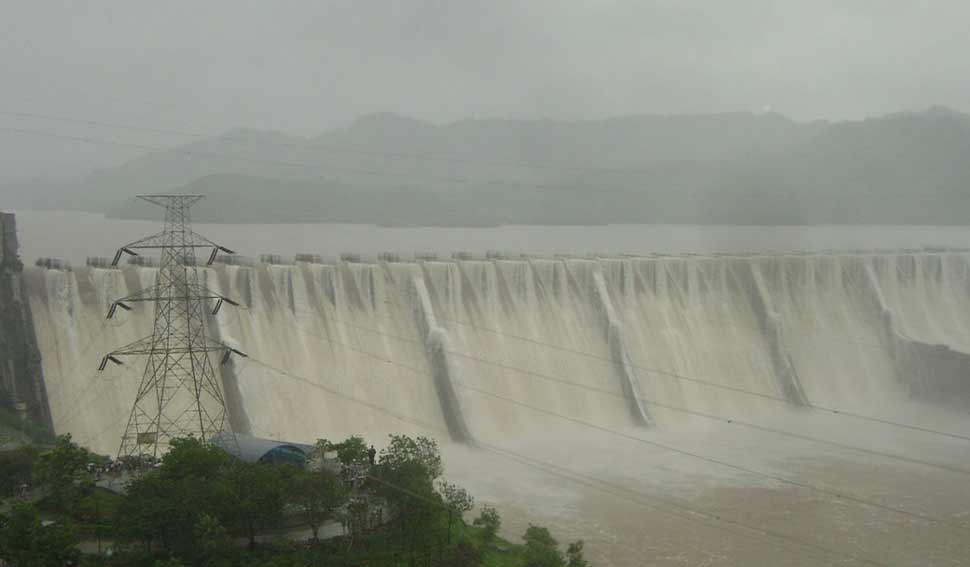AJP opposes Dibang Multipurpose Hydropower Project, PM lays foundation amidst opposition

Assam’a regional political party, Assam Jatiya Parishad (AJP) has strongly opposed the 2,880 MW Dibang Multipurpose Hydro Power project, the foundation of which was laid by Prime Minister Narendra Modi in Arunachal Pradesh on March 9.
To be built at a cost of more than Rs 31,875 crore, the Dibang project will be the highest dam structure in the country. It will generate electricity, help in flood moderation and lead to employment opportunities and socioeconomic development in the region.
The project would come up near Munli village in Lower Dibang Valley district, Arunachal Pradesh. The project will have a 278-metre-high dam, which would be the highest Concrete-Gravity Dam in India. The dam is planned to be constructed with the Roller Compacted Concrete (RCC) technique and it will be the highest RCC dam in the world. The Dibang dam aims to place a peak of more than 5 lakh cubic metres of concrete in one month, which will be the first in the world.
The project will generate 11,223 million units of hydropower every year, providing clean and green energy that will be fed into the Northern Grid. With a construction period of 108 months, the project is scheduled to be commissioned in February 2032. It has the potential of providing direct employment to 500 people during the construction phase and to 300 people during operation.
The Dibang project will provide 12% free power and an additional 1% free power for the Local Area Development Fund for the development of the state of Arunachal Pradesh. The project will enable the state and the country to progress towards the target of Net Zero.
The project is designed as an energy storage project, with flood moderation as one of the key objectives, besides power generation. For flood moderation, a capacity of 1,282.60 Million Cubic Meters will be created by keeping the reservoir below the Full Reservoir Level in monsoon.
Citing concerns over potential devastation in areas such as Shadia sub-division, South and North Assam, the AJP has raised alarms about the risks posed by the massive hydropower project.
The Dibang Multipurpose Hydropower Project, expected to be completed by 2032, is being undertaken by the National Hydropower Corporation (NHPC) in the southern Dibang Valley district of Arunachal Pradesh, above Shadia in the south of Dibrugarh and Tinsukia districts of Assam. With a 278-meter-high dam, 148 meters taller than the Lower Sovansiri Hydropower Project, the construction cost stands at Rs 31,876.39 crore.
“Despite the AJP’s concerns and opposition, Prime Minister Narendra Modi laid the foundation stone for India’s largest hydropower project,” AJP president Lurinjyoti Gogoi and general secretary Jagadish Bhuyan said here on Sunday.
The regional party highlighted the unsuitability of earthquake-prone areas like Assam for large dam construction, emphasizing the potential risks to lives and property.
They pointed out that in 2014, PM Modi had spoken against massive dams during a public meeting in Pasighat, advocating for smaller hydropower projects instead.
“The history of disasters, such as the 1950 earthquake that devastated the upper Assam including Shadia sub-division, adds weight to the AJP’s concerns. Given this history, the AJP leaders demanded that the Union Government reconsider the construction of the Dibang Multipurpose Hydropower Project and halt construction immediately to prevent potential disasters in the future,” Gogoi and Bhuyan added.
The foundation of the project was laid despite the Forest Advisory Committee (FAC) scrapping the proposal to establish a hydropower project in Dibang Valley, citing outdated data, opposition from local communities, and the state’s “poor” track record in complying with environmental norms.
The establishment of the 3,097-megawatt Etalin hydroelectric project proposed as a joint venture by Jindal Power and the Hydropower Development Corporation of Arunachal Pradesh, has been debated by the FAC since 2015. The project was first proposed in 2014.




Leave a Reply